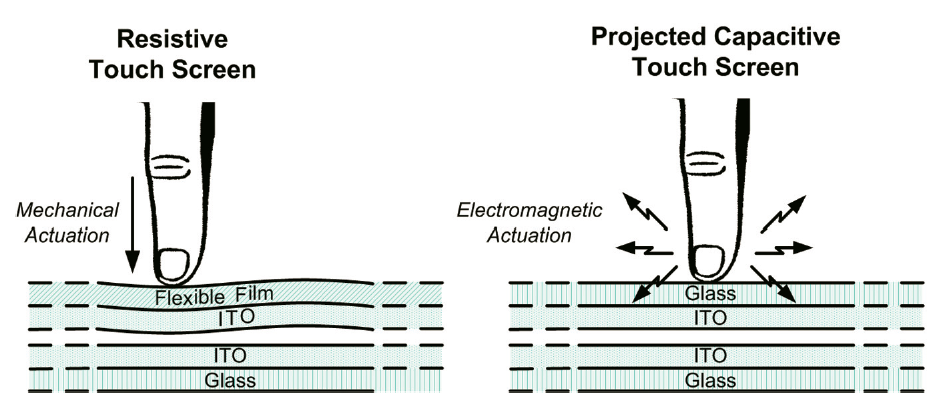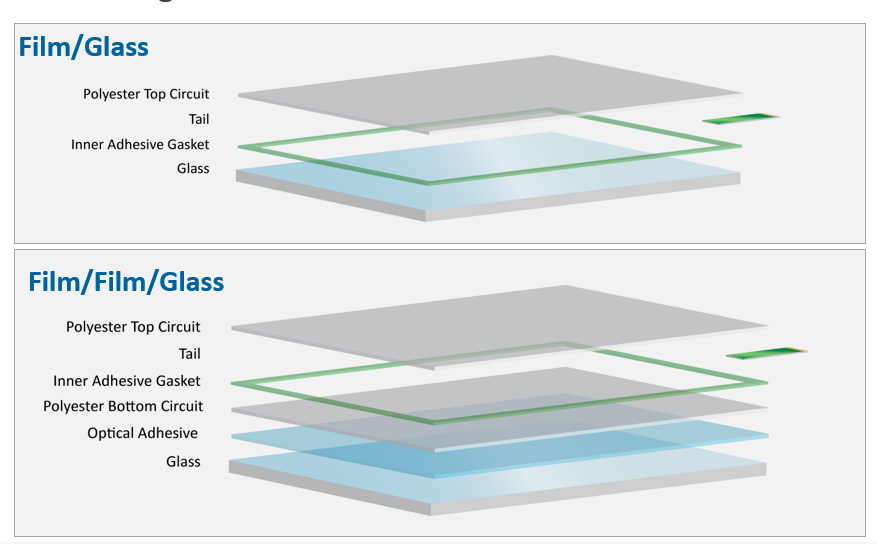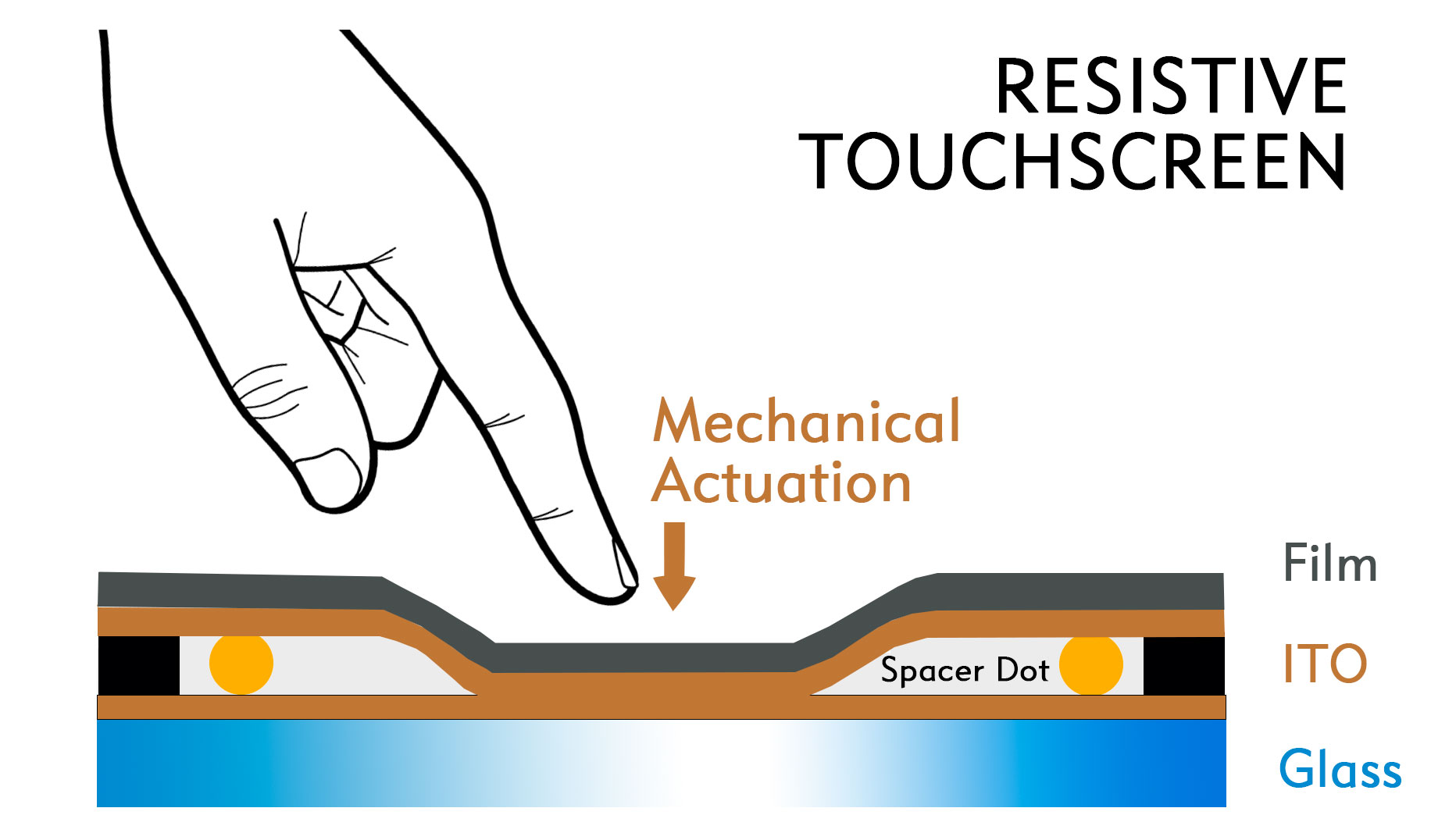Resistive Touch
A resistive touchscreen works on a number of layers and when the layers are pressed together, a touchpoint is registered.
A Resistive touchscreen requires a touch with a certain amount of force applied to its surface. It consists of a flexible film upper layer and a rigid lower layer. Resistive touchscreens can be operated with a finger, a fingernail, a stylus or any other pointing object. However this technology is rapidly disappearing and we address some of the challenges why in our article on RTP technology.
Advantages of resistive touch
- Activated with any input (finger, stylus, gloved hand, pen etc)
- Low production cost
- High resistence to dust, water and vibration
- Very little EMI discharge
- Low power consumption
Disadvantages of resistive touch
- Lower transmittance and overall optical quality
- Generally limited to single or dual touch
- Prone to scratching and damage
- Requires periodic recalibration
- Limitations on the size
Differences between PCAP and resistive touch

Types of resistive touch configuration

Touch Technology Comparison
| Resistive Touch | Capacitive (surface) |
Projected Capacitive (PCAP) | SAW | Infra-red | |
| Clarity | Good | Very Good | Very Good | Very Good | Best |
| Works with any object | Best Any object |
Poor Finger or capacitive stylus |
Good Finger, capacitive stylus, surgical glove |
Good Finger, gloved hand, soft stylus |
Very Good Most objects |
| Sensitivity | Good | Very Good |
Very Good | Very Good | Best |
| Accuracy | Very Good | Good | Best | Very Good | Very Good |
| Scratch Resistant | Poor | Very Good | Best | Best | Best |
| Sensitivity to humidity | Best | Best | Best | Very Good | Very Good |
| Sensitivity to cleaning | Very Good | Very Good |
Best | Very Good | Best |
| Sensitivity to contaminants | Best | Good | Very Good | Average | Good |
| Sensitivity to EMI | Best | Average | Average | Very Good | Best |
| Sensitivity to vibration | Best | Very Good | Very Good | Very Good | Best |

How resistive touch works
A resistive touch screen consists of a flexible film upper layer and a rigid lower layer which when pressed join the layers together to complete the circuit and register a touch.
 - Copy.jpg)